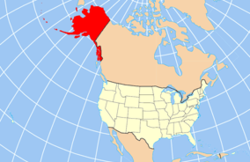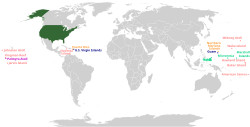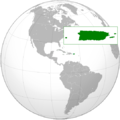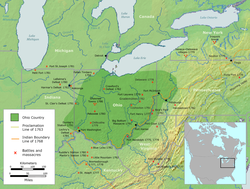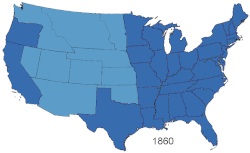
The territory of the United States and its overseas possessions has evolved over time, from the colonial era to the present day. It includes formally organized territories, proposed and failed states, unrecognized breakaway states, international and interstate purchases, cessions, and land grants, and historical military departments and administrative districts. The last section lists informal regions from American vernacular geography known by popular nicknames and linked by geographical, cultural, or economic similarities, some of which are still in use today.
Contents
- Colonial era (before 1776)
- Thirteen Colonies
- Pre-Revolutionary War regions
- Colonies settled but unrecognized
- Colonies proposed but unrealized
- Independent entities later joined to the Union
- Regions purchased from foreign powers
- Regions annexed from or ceded by foreign powers
- Ceded or purchased Native American regions
- Interstate, territorial, and federal cessions
- Former organized territories
- Internal land grants, cessions, districts, departments, claims and settlements
- Alaska
- Colorado
- Iowa
- Nebraska
- New York
- Ohio
- Oklahoma
- Pennsylvania
- Tennessee
- Federal military districts and departments
- Central United States
- Pacific area
- The south
- The west
- Retroceded possessions and overseas territories
- Functioning but non-sanctioned territories
- Civil War-related
- Regional nicknames
- Belts
- See also
- References
- External links
For a more complete list of regions and subdivisions of the United States used in modern times, see List of regions of the United States.









